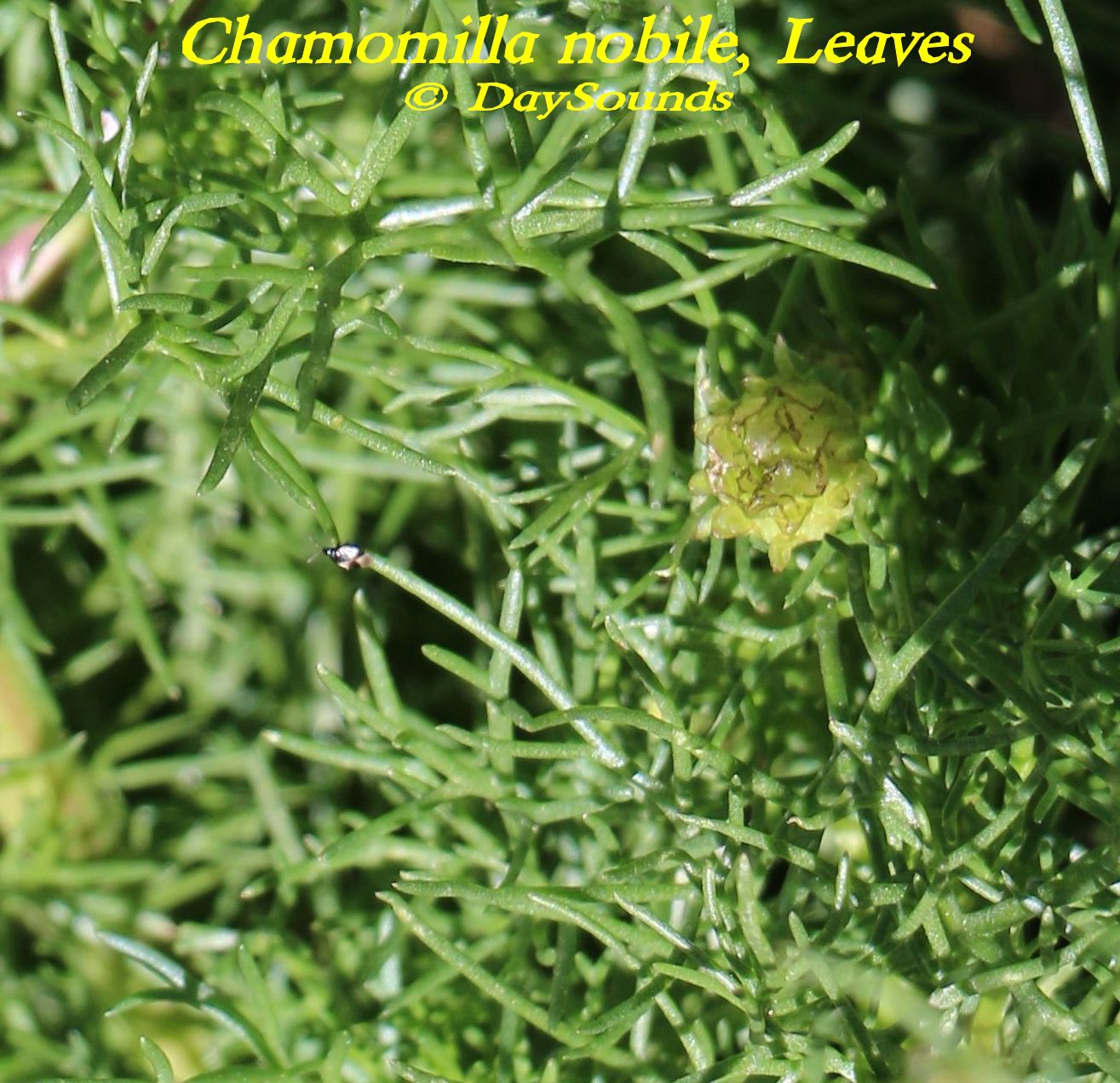by DaySounds © 2013-16


Chamomile
Roman chamomile (Chamaemelum nobile)
German chamomile (Chamomilla recutita)
It grows to about 1 foot tall, oftentimes forming mats. Its yellow disk floret head
is flatter and wider than recutita's and the receptacle is solid. Recutita is an annual,
with hairless stems and growing taller than nobile (about 2 feet); its yellow disk
floret head is obviously conic, and the receptacle hollow. Both have white ray flowers.
The above Chamomile species have anti-bacterial, anti-viral, anti-inflammatory,
antispasmodic, sedative, blood-thinning, muscle relaxant, and skin care properties.
Chamomile shouldn't be taken by pregnant women, people on blood-thinners,
patients who are going to have surgery, or if they have an open wound. It might
produce drowsiness; therefore, it shouldn't be taken before driving or operating
heavy machinery.
Not True-Chamomiles:
Scentless chamomile (Matricaria perforate/Tripleurospermum perforatum/inodorum)
has erect to semi-erect stems--which may be reddish, is highly branched, and can
grow up to 1 m tall. Its properties are similar to the species mentioned earlier, but with
milder benefits.
Wild chamomile: See Pineapple Weed.
Stinking Chamomile (Anthemis cotula) resembles nobile, but instead of smelling
like apples, it has a fetid odor--avoid it.
Wild Tansy/"Buttons" (Tanacetum Vulgare): Its leaves are serrated, narrow, fernlike.
It lacks ray flowers; however, it has yellow disk flowers, which look similar to Roman
Chamomile's, but even flatter. It can be used externally to kill skin bacteria and fungi;
also, as an anti-inflamatory and insecticide; however, it is toxic if taken internally.
Our advice: Avoid it altogether, even using it externally.
Oxeye Daisy/"Margarita": See Daisy, Oxeye.
©DaySounds
PO Box 746497
Arvada, CO 80006
USA